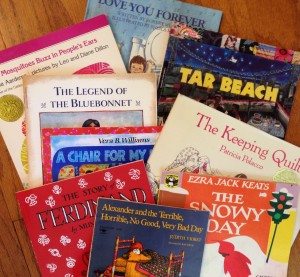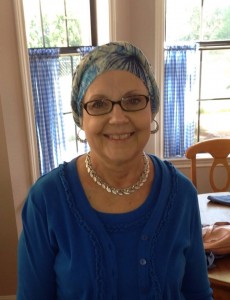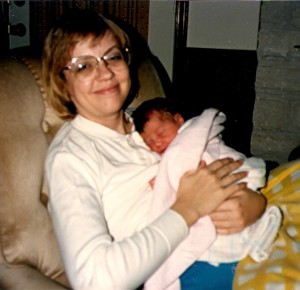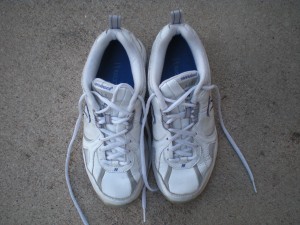Not family history, but it’s my life…
I’ve been a volunteer English as a Second Language (ESL) teacher for about 10 years at the church I attend. Our students are adults and come from all over the world, which is perfect for me because my only language is English! I love children’s books and believe that they can be a great vehicle for increasing vocabulary, improving fluency, increasing cultural literacy, and prompting discussion. You have to choose well, but there are so many good books to choose from! Others have written about the value of using children’s literature in the adult ESL classroom, so I’ll just say, “I agree!”
My first experience using children’s literature in an adult ESL class was several years ago. I knew that teaching fairy tales and folk tales is valuable because of all the cultural references that come from such stories – cry wolf, not by the hair of my chinny-chin-chin, juusst right!, and so on. These are lost on our students unless they know the story behind the words. Here’s a scary example …
One summer our lead teacher left the rest of us in charge, so I used the opportunity to try out some lessons using these old stories for children. I included The Three Little Pigs, The Boy Who Cried Wolf, and Little Red Riding Hood.
 Then I got a little braver and tried a contemporary book. The book I chose was “Love You Forever” by Robert Munsch. I chose it for several reasons. It is a sweet story that is relatable cross-culturally. There are patterns of speech and repetition and rhythm that just scream “I can help with fluency!” Although there is a sadness to the story, there is also humor. The vocabulary is accessible to a range of students. But I worried that the men especially might not like it or might think it a silly book for us to read. I hoped for the best.
Then I got a little braver and tried a contemporary book. The book I chose was “Love You Forever” by Robert Munsch. I chose it for several reasons. It is a sweet story that is relatable cross-culturally. There are patterns of speech and repetition and rhythm that just scream “I can help with fluency!” Although there is a sadness to the story, there is also humor. The vocabulary is accessible to a range of students. But I worried that the men especially might not like it or might think it a silly book for us to read. I hoped for the best.
I need not have worried. One of the men, a young pediatrician/anesthesiologist from Iraq, said, “This is one of the best books I have ever read!” Success!
Years passed. Then an article on my Facebook feed gave me the inspiration to start a book club: 7 Children’s Books Every Adult Should Read
I started the Book Club a year ago in April and followed book suggestions from the article linked above. Our first book was “Alexander and the Terrible, Horrible, No Good, Very Bad Day.” We still haven’t read all seven books on this list, but we have read a good many more than seven.
Book Club meets for one hour once a week after our regular two-hour class. The largest attendance has been about 15; we usually have eight-ten participants. We are comfortable sitting around a large table, which facilitates discussion and also the sharing of books. We never have a book for everyone. I encourage students to get a library card and I try to pick books that are available at the library. It works well enough if there is a book for every three students to share. Sometimes I can find a pdf online, post the link, and bring my iPad for students to use along with their phones and tablets – but often the illustrations are missing or incomplete and page breaks don’t always match up.
A typical Book Club goes like this:
* I provide a little background information about the book/author
* I read the book aloud to students, showing illustrations if needed
* I solicit initial reactions
* If the book is short enough, we read the book again, going around the table with each student reading a page
* I have discussion questions prepared, but if students are ready with questions or comments of their own, I let them go for it.
I don’t have a set criteria for selecting books, but I do have some general parameters. I have often selected books I own and enjoyed sharing with my children when they were young. Many of these books were popular/published during the 1980s-90s.
I choose books that can be read at least one time through with plenty of time left for discussion within our one hour time frame. I sometimes time myself reading the book aloud to determine if it is doable. When students read the book around the table, it always takes longer than when I read it to them, so I weigh the importance of a second reading. Sometimes I suggest that students just listen to me read and not read along to see how much of the story they get just by listening. I also want them to hear the rhythm of English, the intonation, and the permission to be silly, if called for. A book read to children requires that you read with emotion – and sometimes voices! – not the rote same-tone style often used by those learning a language.
 Many of the books I select are Caldecott books; some books are classics – maybe not award-winning, but so much a part of the culture that they have a significance beyond accolades. Sometimes I select by theme, season, or author.
Many of the books I select are Caldecott books; some books are classics – maybe not award-winning, but so much a part of the culture that they have a significance beyond accolades. Sometimes I select by theme, season, or author.
I am always delighted by the conversations the books provoke and am often blown away by the observations and insights offered by the students. So often they see something in the illustrations that I totally missed, or understand the story from a different perspective. I can honestly say that we learn together. And I love it when they understand the humor in a story!
Added benefits for me:
* I do a little research about the books and authors in preparation and I have learned many things that I did not know before.
* I’ve discovered some wonderful books that I did not know.
* When I felt comfortable starting the Book Club, it was a true indication that my chemo brain was improving. I was finally able to plan an activity and choose books to read! This was a really big deal for me and motivated me to continue.
ESL Book Club Reading List:
Alexander and the Terrible, Horrible, No Good, Very Bad Day – by Judith Viorst
Where the Wild Things Are – by Maurice Sendak
In the Night Kitchen – by Maurice Sendak
The Paper Bag Princess – by Robert Munsch
Love You Forever – by Robert Munsch
From Far Away – by Robert Munsch
Why Mosquitoes Buzz in People’s Ears – by Verna Aardema
Legend of the Bluebonnet – by Tomie de Paola
The Little Engine That Could – by Watty Piper
Charlotte’s Web – by E. B. White (This was a several week book study)
When I Was Young in the Mountains – by Cynthia Rylant
Grandfather’s Journey – by Allen Say
Meanwhile Back at the Ranch – by Trinka Hakes Noble
Miss Nelson is Missing – by Harry Allard
The Cat in the Hat – by Dr. Seuss
The Sneetches – by Dr. Seuss
Horton Hears a Who – by Dr. Seuss
A Visit from St. Nicholas
The Polar Express – by Chris Van Allsburg
The Story of Ferdinand the Bull – by Munro Leaf
The Missing Piece Meets the Big O – by Shel Silverstein
The Giving Tree – by Shel Silverstein
The Snowy Day – by Ezra Jack Keats
The People could Fly: The Picture Book – by Virginia Hamilton
Tar Beach – by Faith Ringgold
The Legend of The Indian Paintbrush – by Tomie de Paola
Miss Rumphius – by Barbara Cooney
A Chair for my Mother – by Vera B. Williams
Peter’s Chair by Ezra Jack Keats
The Gardener – by Sarah Stewart
The Lorax – by Dr. Seuss
Last Stop on Market Street – by Matt de la Pena
The Keeping Quilt – by Patricia Polacco
Fiona’s Lace – by Patricia Polacco
Thank You, Mr. Falker – by Patricia Polacco
Chicken Sunday – by Patricia Polacco
Amelia Bedelia – by Peggy Parish
The Tree that would not Die – by Ellen Levine
The Relatives Came – by Cynthia Rylant
The Ox-Cart Man – by Donald Hall; illustrated by Barbara Cooney
Thunder Cake – by Patricia Polacco
Mirette on the High Wire – by Emily Arnold McCully
The Trees of the Dancing Goats – by Patricia Polacco
The Blessing Cup – by Patricia Polacco
Mufaro’s Beautiful Daughters: An African Tale – by John Steptoe
Pink and Say – by Patricia Polacco
Henry’s Freedom Box: A True Story from the Underground Railroad – by Ellen Levine
Martin’s Big Words: The Life of Dr. Martin Luther King, Jr. – by Doreen Rappaport
Swimmy – by Leo Lionni
Oh, the Places You’ll Go! by Dr. Seuss
Holes, by Louis Sachar (a several week study)
Alexander, Who Used to be Rich Last Sunday
Gorilla, by Anthony Browne
Little Beauty, by Anthony Browne





